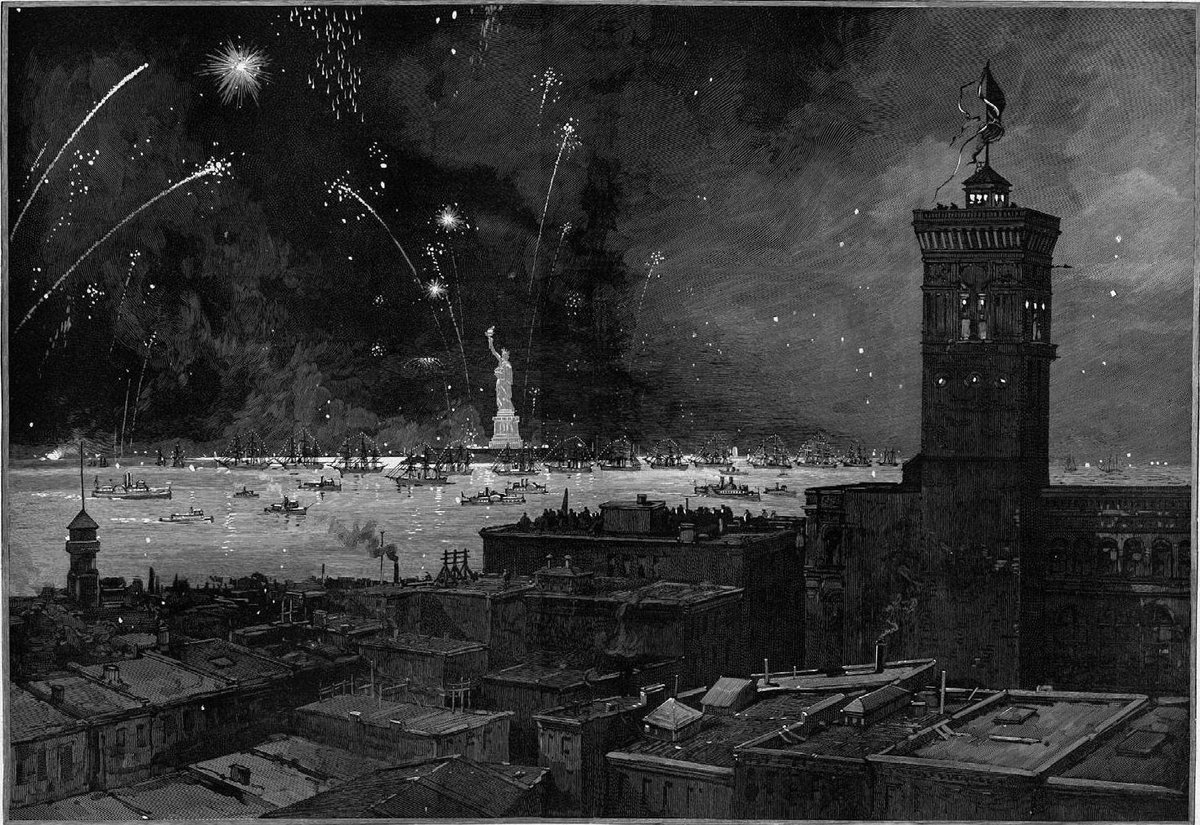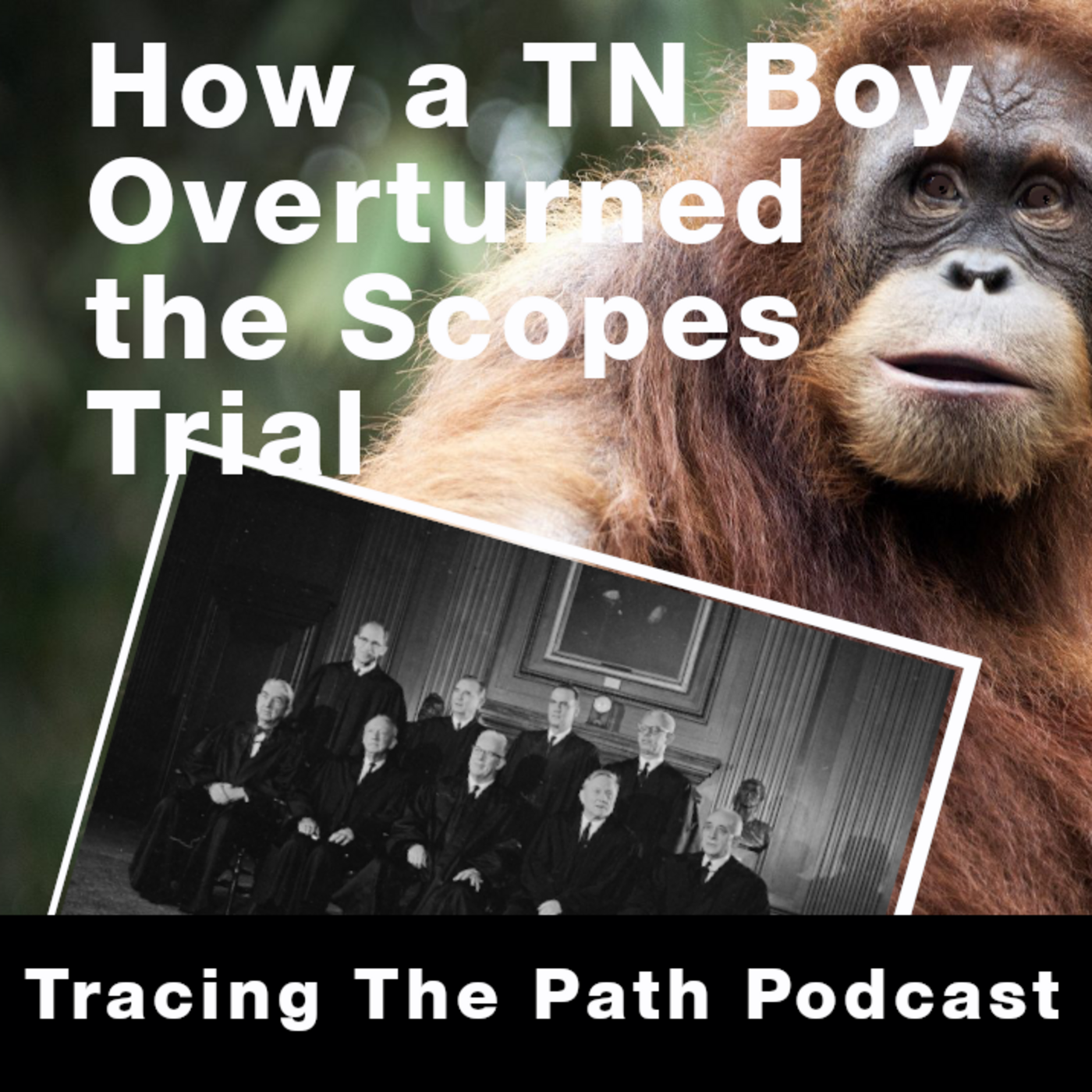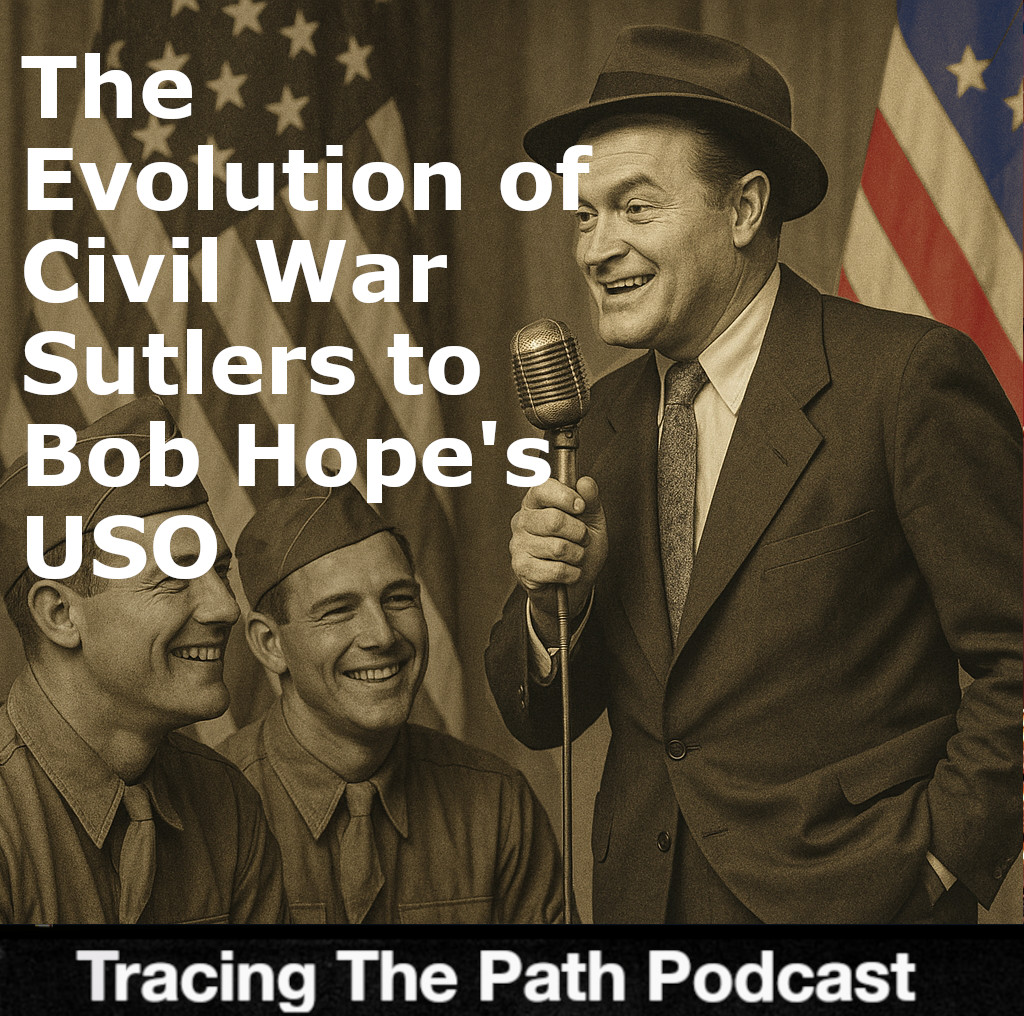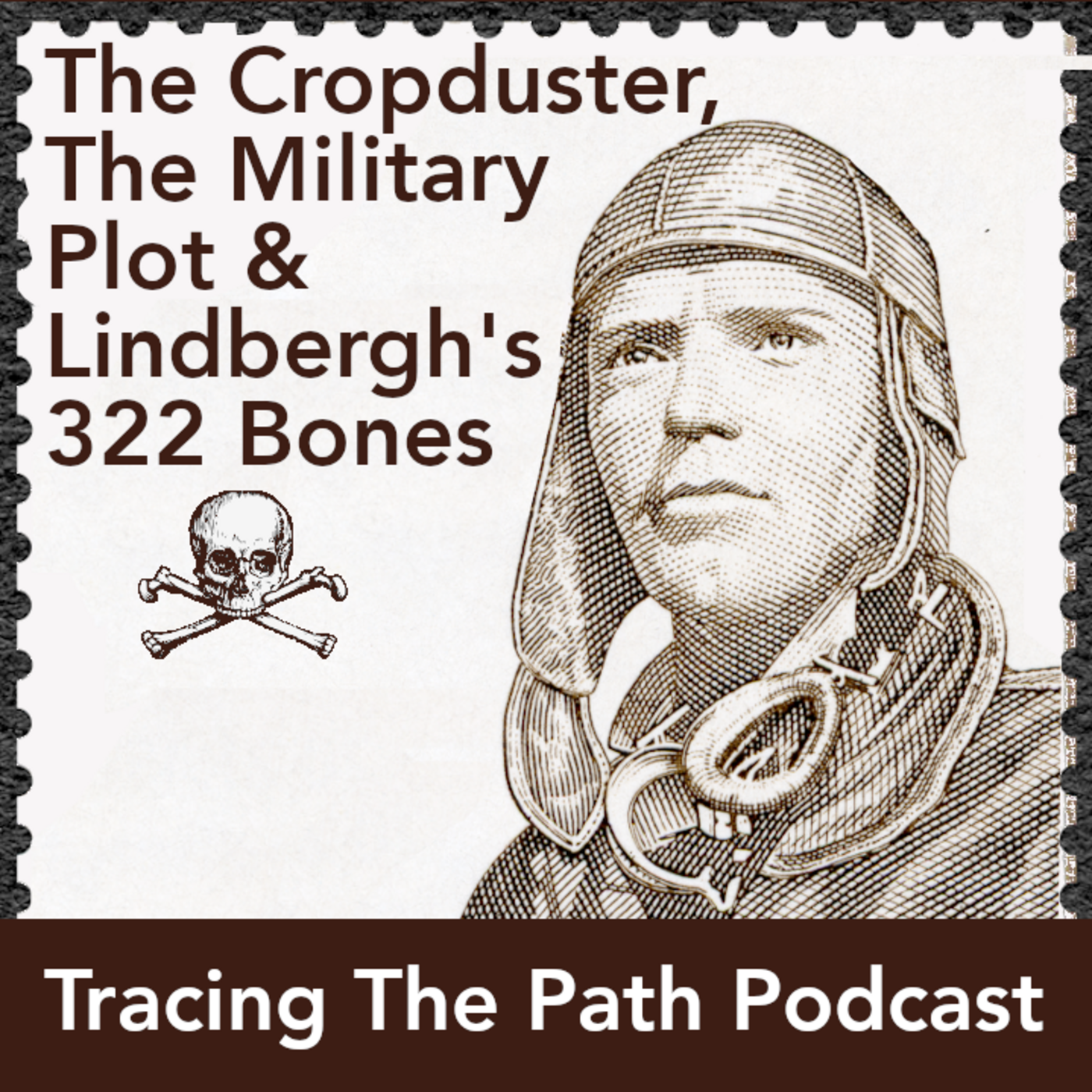TRACING THE PATH PODCAST

She Bombed The President for Votes
This episode traces the interconnected paths of the women’s suffrage movement and early aviation, highlighting the often-overlooked contributions of women. It begins by establishing the long struggle for women’s rights, from the Seneca Falls Convention to the early 20th century, emphasizing the dedication of figures like Elizabeth Cady Stanton, Susan B. Anthony, and Matilda Jocelyn Gage. The narrative then reveals a surprising link: L. Frank Baum’s The Wonderful Wizard of Oz, inspired by his suffragist mother-in-law Matilda, challenged prevailing notions of female fragility and inspired a new generation of empowered women, including Catherine Wright.
Catherine’s vital but understated role as the “Wizard behind the curtain” for her brothers, the Wrights, in both their business and public relations, demonstrates women’s capacity for ingenuity and leadership. Finally, the text showcases how these advancements in aviation, spearheaded by female pioneers like Ruth Law and Lita Richburg Hornsby, symbolically and literally took flight, ultimately contributing to the eventual passage of the 19th Amendment, which granted women the right to vote.

Audio Hour:
If you run an activity group, classroom or “audio book club”, click here for more information on using Tracing The Path.
Throughout the episodes, every tune is somehow related to the topic. In the Twinkies episode, for instance, the discussion of the Brooklyn Tip-Tops Baseball team concludes with “Take Me Out To the Ballgame”.
How many do you recognize? And harder, how many can you name?

On October 28, 1886, a flotilla of boats converged in New York Harbor for the grand unveiling of the Statue of Liberty. It was given to the U.S. by the French, its designer, Frédérick Auguste Bartholdi, wanted it to be a symbol of liberty celebrating the end of the Civil War, and he wanted it to inspire the next generation of Americans.
He wrote, “The light that illuminates the long path ahead is you, the youth, who are holding its torch.” This is the story of the fight for liberty for all, and many of the people who flew great heights to get there.
Elizabeth Cady Stanton
Our story begins in 1840 when Elizabeth Cady Stanton and Lucretia Mott were barred from attending an anti-slavery convention because they were female. That little act of exclusion prompted them to hold their own convention, to push forward the rights of women.
In 1869, Elizabeth Cady Stanton and her friend Susan B. Anthony would create the National Women’s Suffrage Association. Activists Matilda Jocelyn Gage would pen the Decoration of Rights For Women, and Sojourner Truth and Lucy Stone would add their names to the cause.
And by the year 1900, California, Wyoming, Utah, Colorado and Idaho, will have passed women’s rights laws. But these warriors of the suffrage movement could not live forever. By 1906, the last of the original titans would pass on.
The fight, for gaining the national right to vote, would rest on the shoulders of the next generation. Unfortunately, most history books failed to regale who’s behind the curtain of the second wave.
Matilda Jocelyn Gage was one of the original suffragists who shared the stage with Susan B. Anthony and often did the work Susan B. Anthony got credit for. However, she didn’t live to see the 20th Century. Her legacy would take a curious turn, one much bigger than she could ever have foreseen.
Her father had been a doctor, and as such emphasized the importance of education. He was proud to have given Matilda a college-level education himself, as there were no co-ed colleges nearby. So Matilda was overjoyed when her daughter, Maud, grew up to attend law school at Cornell University. So proud she was of her daughter and excited that her daughter, a lawyer, would be there to take up the cause of women’s suffrage.
But Maud would fall in love with the playwright, halfway through college, and would leave to support him. Matilda’s hopes that Maud would grow up to be an activist, weren’t dashed, however, that is until Maud and her husband moved west to South Dakota and then Chicago.
Maud’s activism would mostly be channeled into her new role of mom. But being in Chicago, it gave Matilda Jocelyn Gage and Susan B. Anthony a place to stay when they spoke in Chicago stages.
All the suffrage talk in the house was not lost though. It left the big impression on Maud’s husband, Frank. While Frank fancied himself a playwright, the truth is, he chased many jobs trying to find his place in the world.
He did find some success writing children’s books. In fact, writing became his career. 55 novels, 83 short stories, 200 poems, and at least 42 plays dotted his resume. But it was his fourth book that would progress the suffrage movement the most, and make him a best-selling author. It would not be Maud Gage who’d carried Matilda’s torch.
It would be her son-in-law, Frank, who would extend the legacy. Frank’s fourth book was about a brave girl who showed leadership, a sense of adventure, and great critical thinking skills. It was a direct contrast to those who said women were too delicate to vote and make important decisions.
And the book was an immediate hit, Suffragists praised it for inspiring women and girls everywhere. The book was called “The Wonderful Wizard of Oz” and its author, L. Frank Baum.
The heroine Dorothy Gale showed no fear. Even when a tornado carried her house high above the trees, and she had to face those that were trying to stop her. She was even excited to fly home in a balloon at the end.
Playgrounds everywhere were soon filled with girls leading their own adventures, becoming the heroines of their own stories. The Wizard of Oz dashed to the idea women were too delicate for the trials of life, a baseless message that never should have taken hold in the first place.

The Wright Brothers (?)
One of those young heroines, inspired by the Wizard of Oz, was Katharine Wright. She grew up in Dayton, Ohio, one of seven kids in a family that descended from the Vanderbilt’s and the Huguenots.
Katharine’s mother set the tone for the family. She was one of a handful of women who had graduated from college in the 1800s. But despite her obvious affinity for academic instruction, she also taught her kids the value of pure ingenuity.
As Katharine would later recall, her mother could fix anything. She even invented appliances in their home to solve problems. Sadly, she died when Katharine was 15, leaving Katharine to raise her six siblings.
While her father traveled for work and needed Katharine at home, he also understood the necessity of skills and education. He pushed Katharine to do well in school and to go to college. She went to nearby Oberlin College, one of the first in the nation to offer co-ed education, and one of the first to allow black students all before the Civil War. She graduated from Oberlin with a degree in the classics and got a job teaching Latin at a Dayton, Ohio High School.
Her brothers embodied the ingenuity of their mother. Just out of high school, they became entrepreneurs starting a printing press company and even printed their own newspaper. Mechanically inclined, when bicycles got popular, they opened a bike shop where they sold their own bicycles and repaired them.
Then the older brother, Wilbur, read that a man in Germany, Otto Lilienthal, had crashed trying to build a flying machine. The drawings of his flying machine framework didn’t look that much more complicated than a bicycle, which intrigued him.
And thus Wilbur and Otto began a letter writing relationship, both in awe of the insights and passion of the other. Wilbur felt like Otto’s machine would probably work if it had had better controls once he was in the air, and decided he should try to make one to test his own thoughts.
Katharine had always been supportive of her brothers, and as this hobby turned into an infatuation, she knew Wilbur would need help. He had already recruited his younger brother, Orville, and with them spending less time at the bike shop, she already knew she was going to have to help them with money.
The US Society of Professional Engineers had been following the projects of Otto Lilienthal in Germany, and asked if he would come speak about the rules he’d learned about flight. Otto, in turn, asked Wilbur if he’d go and speak instead about all they had shared together.
But Wilbur being shy didn’t think he could do it. Knowing the engineers would be great for Wilbur to confer with, Katharine convinced him to speak, which became the first time the world knew Wilbur Wright was working on a flying machine of his own.
As Wilbur’s testing and ideas took more time and concentration, Katharine began working at the bike shop as well to keep the business going. When her brothers finally got their airplane off the ground, it was Katharine who sent word to all the news outlets.
And as media inquiries came in and other scientific questions were sent their way, it was Katharine who responded to them all. It was Katharine who began serving as the Wizard of Oz behind the curtain of the Wright brothers.
In 1906, she helped Wilbur file a federal patent for their inventions, to not only protect them, but also to begin selling them. While their letters to the US government were slow to show interest, Great Britain, France and Germany were eager to see it demonstrated, and the Wright Brothers were equally eager to get Europe to do just that.
By 1908, the Wrights had made some private sales and negotiated a deal with the US Signal Corps to deliver a plane by the end of the year. But in August, Orville would crash a plane while demonstrating it to the military. And unfortunately, a lieutenant who was on board as an observer became the first airplane fatality.
When Katharine found out she quit her high school teaching job and went to be by his side in Virginia, she would be the face of the company at the funeral and would help Orville’s recovery day after day. When she could see Orville’s spirits were up, she contacted the US Signal Corps and negotiated an extension of the delivery contract, so Orville had time to heal before completing the project.

The Wright’s Domination
Through pure curiosity alone, Charles Ranlett Flint, one of the most influential businessmen in America, the founder of US Rubber and the Candy Company American Chicle, showed up at the Wright home to see their airplane. Over a short conversation, it was clear to see how an agency partnership with Charles would open doors all over Europe for sales.
So a plan was hatched to tour Europe doing public showings in six countries. With Orville’s injuries and Wilbur’s awkward shyness, it was decided that Katharine would need it to be in Europe as a principle of the company.
And ahead of her trip, she had the ingenuity and foresight to teach herself French in preparation of her many anticipated duties.
Katharine outdid herself in Europe. She dominated the social scene and delighted all the dignitaries. While her brothers were demonstrating the planes, she was making deals with the likes of the King of Spain, Prince Friedrich Wilhelm of Prussia and the Crown Prince of Germany. The French president himself was so enamored with what the Wrights had done, he awarded all three of them, the French Legion of Honor. France’s highest award for merit.
Katharine still remains one of the very few U.S. women to have received it.
The Wrights returned celebrities, even being honored at the White House by President Taft, where Orville commented, “We would be nothing without our sister, Katharine Wright.”
Katharine‘s personal ascension from family leader to business-related suited her just fine, and it started in her the desire to join the women’s suffrage movement in action, not just in her heart. She was certainly proud of her mother, her degree from Oberlin, and the other suffragists that came from her school. But it was no longer time to be proud.
It was time to fight for others.
She quickly became a leader in the Dayton Suffrage community and organized a march of 1,300 women and supporters. She even spoke to the Ohio State Legislature about giving women the right to vote.
And while she spoke and wrote articles, and marched, she didn’t realize it at the time, but it would be their aviation school they had started, the Wright aviation school. That would be her greatest contribution to the suffragist moment.
One of the first students to graduate from their flight school was Ruth Law. Ruth Law would help carry the torch that Susan B. Anthony and Matilda Jocelyn Gage had started. Ruth was an adventure seeker. Her brother was a movie stuntman and the first person to parachute off of the top of the Statue of Liberty’s torch.
He had always challenged Ruth to physical things, never considering she might be too delicate for such matters. Ruth who lived in Lynn, Massachusetts took flying lessons from one of the Wright’s pilots, Harry Atwood. It only took a few hours to learn the basics, which Ruth took to quite easily.
And like her brother, she used her new skills to push the boundaries, soon giving aerobatic demonstrations and flying 360-degree loops. She participated in both speed and altitude competitions, breaking the air speed record in a Chicago-to-New York trip. And then in 1917, she wrote a letter to President Wilson, lobbying him to allow women to fly military aircraft in the war.
Sadly, she was told no, so she wrote an article, an air travel magazine titled Let Women Fly, that sparked a new nationwide conversation. Leda Richburg Hornsby was another of the first female graduates of right aviation. She flew exhibition fights in Chicago and some on Staten Island.
In 1916 in New York, that is where she met Carrie Chapman Catt, the then current president of the National American Women’s Suffered Association. Carrie had an idea. The first lighting of the Statue Liberty was coming up and would involve a great number of spectators. President Woodrow Wilson and his wife were scheduled to be in Wilson’s yacht to take in the festivities.

Who Creates the Historical Truth?
Wilson had yet to declare his support of the suffrage movement, which was hurting the chance of the women’s voting right amendment getting passed. It had already failed every year since 1878.
The celebration of Lady Liberty was the perfect time to get his attention. Ruth Law had already been hired to fly circles high above the statue in an illuminated plane, so it would be up to Leda to fly over Wilson’s yacht and “bomb” him with suffrage pamphlets.
Unfortunately, high winds prevented success that day. But that didn’t stop the papers from landing on the yacht, naming Leda and her passenger item Blair “Suffbirds”.
The next year, Leda became one of the Silent Sentinels in D.C.
They were a group organized by the National Women’s Party to picket in front of the White House, which happened to be the first time a group decided to picket in front of the White House, and actually happened to be the first time anyone had ever protested in front of the White House.
At first, the protesters were tolerated.
In fact, Wilson would tip his hat to them on his way in. But eventually, they would become a nuisance and would be arrested.
Incidentally, Leda’s attempted bombing of the President with leaflets wasn’t the first time suffragists had used this tactic. Alongside Leda at the White House protest was Lucy Burns.
In 1916, Lucy had dropped suffrage pamphlets all over Seattle, which made the front page of the Seattle Times. Later that year, Leda earned a commission as a lieutenant in the U.S. Aviation Reserve Corps, but she still wasn’t allowed to fly for the military.
Bernetta Miller was another young heroine who was inspired by the Wrights to fly. She found a fight school in New England and learned to fly in a staggering four hours. The flight school was so impressed they actually hired her to pilot their planes when demonstrating them to potential buyers.
In fact, when they had opportunity to demonstrate their planes to the US Army, Vermehter Miller was the pilot. Wanting to fly for the military in the war, but being denied, she volunteered with the YMCA to supply troops on the front lines with food and supplies.
Working alongside the future First Lady, Edith Roosevelt, Vermeter was wounded during the Argonne offensive and was awarded the war cross-metal by the French government.
Unfortunately, Wilbur didn’t live to see all that his family had inspired. He passed away in 1912 at the age of 45. Katharine and Orville took the helm, mostly battling patent infringements and lobbying the Smithsonian to list Wilbur as the first to fly.
In 1915 they sold the patents and company to Glenn Martin, who formed the Martin Wright Company. A few more sales and mergers and the company will be right started in the back of a bicycle shop, would one day become Lockheed Martin, one of the largest providers of aircraft to the world.
Katharine would end up back at Oberlin as the second woman to serve on their board of trustees. She would later marry one of the board members and move to Kansas.
After her death from pneumonia, Orville would remain to craft the Wright family history.
The Suffragists
After World War I, Woodrow Wilson would finally come out as a supporter of the suffrage movement. He would state, “We have made a partner of the women in this war. Shall we admit them only to a partnership of suffering and sacrifice and toil and not to a partnership of privilege and right”.
With his weight behind the issue, Congress passed the 19th amendment later that year, 1919, giving women the right to vote.
All that it needed then was two-thirds of the states to ratify.
It would take 36 states to ratify the amendment, making it a permanent law of the land. Wisconsin, Illinois, Michigan, and Kansas were the first to vote and approved the amendment. When it was a Ohio’s turn, the state of KathArine Wright, they not only approved the measure, but approved a second one as well. In the event all the states hadn’t approved the measure by November, the second act they passed guaranteed the women the right to vote nonetheless.
Susan B. Anthony’s New York was next, passing easily. Pennsylvania, Massachusetts, and Texas were next. Texas passed an extra law, giving women the right to vote in every election. Iowa, Missouri, and Arkansas would get them to one-third of the states that they needed.
Then Montana, Nebraska, and Minnesota. Georgia and Alabama would be the first to vote against, making suffragists a little bit nervous that the entire South might not go their way.
Before the year was over, Utah, California, Maine, North Dakota, South Dakota, and Colorado would all approve the amendment.
But 1920 would bring more rejections, Delaware, Maryland, Virginia, South Carolina, Louisiana, and Mississippi. By July of 1920, it was clear, Tennessee would determine ratification. In a foreshadowing of the 1925 Scopes trial, the world descended on Tennessee.
The Tennessee Senate voted convincingly to ratify the amendment. That was passed then to the House, wherein two votes it failed to pass with a 48/48 deadlock. Representative Harry T. Byrne, a 24-year-old new kid on the block, had voted no, twice, thinking his constituents were against it.
But then right before the third vote was to convene, he got a note from his mother. It read, “Hurry and vote for suffrage. Don’t keep them in doubt. I have been watching to see how you stood, but have not seen anything yet. Don’t forget to be a good boy, and every good boy listens to his mother.”
With his single vote, the house approved it, Tennessee ratified it, and the Constitution was changed to guarantee women the right to vote.
The process for amending the Constitution does not involve the President.
So all President Wilson could do was watch. However, by this time, his presidency had changed dramatically. On October 2, 1919, Wilson would suffer a debilitating stroke, and it was his wife Edith, who would be by his side.

Woodrow Wilson would get to see up close and personal the strength, love, emotion, and tenacity of a woman. Edith sprung into action, consulting with doctors, politicians and consultants on her husband’s situation. And then on behalf of the president, she took on the role of managing his duties.
She made everyone pass all their interest in the president through her. All the issues, questions, meetings and concerns would pass through her eyes. She would decide if they were important enough to bring the president, meaning she had to understand the ramifications of everything. In her memoirs, she labels the time as one year five months stewardship of the president.
But historians see it differently.
Like Katharine Wright was for the Wright brothers, she was the wizard behind the curtain.
Those who have looked at the role Edith played consider her to have essentially served as the President of the United States until Wilson’s term was over. Despite the opposition’s argument that women were not fit to vote, Edith Wilson was the first female president of the United States.
During the year, the states were ratifying the 19th Amendment.
CUTTING ROOM FLOOR
To hear all the stories that hit the cutting room floor, you have to listen to the episode.
ABOUT THE SHOW
Let us tell you the story of the 20th Century, by tracing each event back to the original decisions that shaped it. You’ll quickly find out that everybody and everything is connected. If you thought you understood the 20th Century, you’re in for a treat.
Tracing the Path is inspired by storytellers like Paul Harvey, Charles Kuralt, and Andy Rooney.
INTERCONNECTED EPISODES
 |
Bob’s Swedish Candy Canes Candy Canes are Swedish . . . with an American twist |
 |
How a Tennessee Student Overturned the Scopes Trial Verdict Can you believe the 1925 Scopes Trial was undermined by a Tennessee high school senior? |
 |
Evolving Civil War Sutlers into the Bob Hope’s USO Many factors went into the success of the USO. It wasn’t necessarily just big hearted celebrities |
 |
The Cropduster, The Military Plot and Lindbergh’s 322 bones The world of Lindbergh is wrapped up into so many things. |
 |
The Wizard of Oz’s 30 Year Miracle Beyond every American watching the Wizard Of Oz, this story has ties to Frank Lloyd Wright. |
 |
How the Oregon Trail Game Made Apple Famous Was it the Apple IIc that made Oregon Trail famous? Or the other way around? |
 |
Was the Idea for m&ms Stolen or Inspired? Did you know in order for m&ms to become a candy, it would require 2 separate wars. |
SEE THE BIBLIOGRAPHY
SUBSCRIBE AND LISTEN (FOR FREE!)
RATINGS & REVIEWS
If you enjoy this podcast, please give it a rating and review.Positive ratings and reviews help bring Tracing The Path to the attention of other history lovers who may not be aware of our show.



